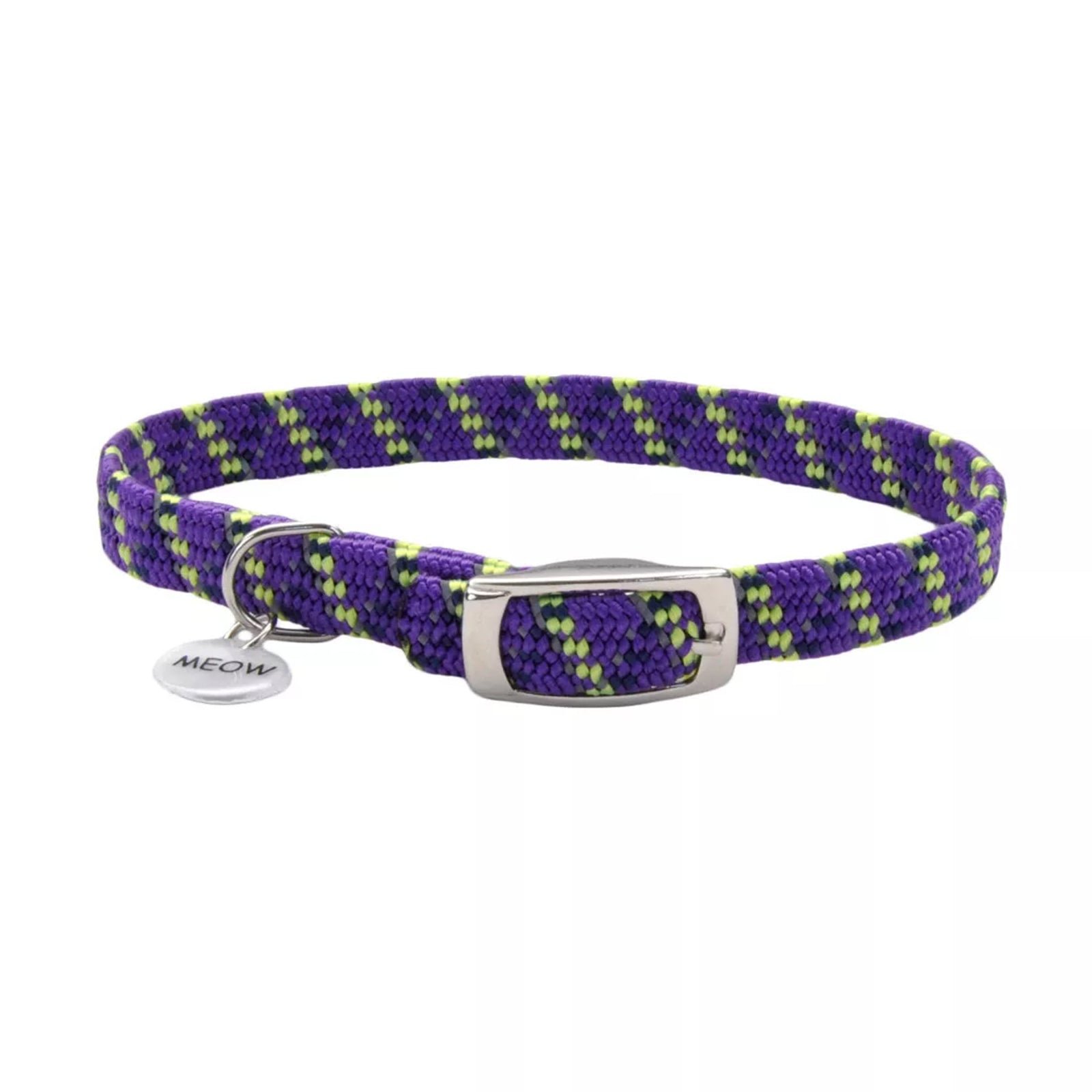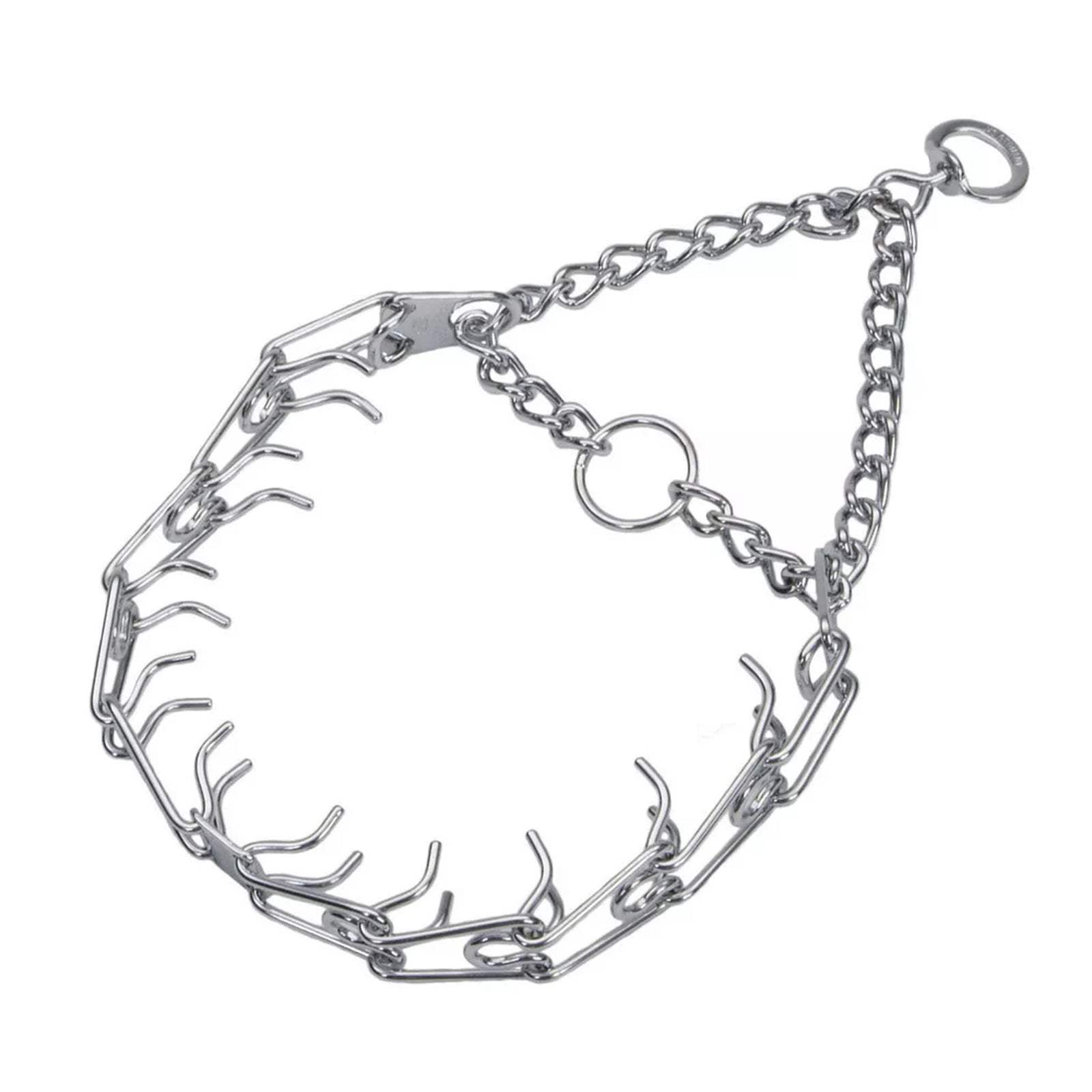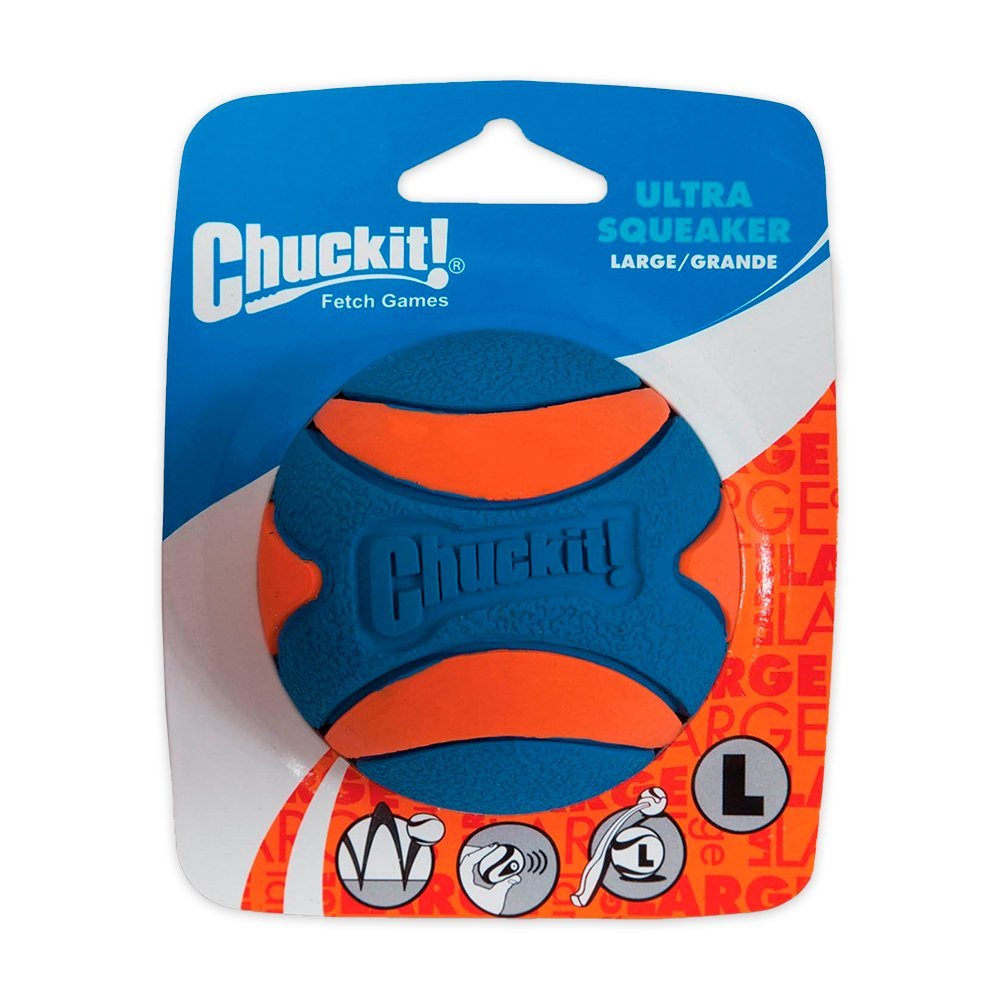📌 Best Flea Treatment for Cats for Fast Relief
Choosing the best flea treatment for cats protects them from itching, discomfort, and harmful parasites. From topical solutions to natural flea treatment for cats, the right product ensures lasting relief and safety. Always select the best cat flea treatment suited to your pet’s age, lifestyle, and sensitivity for complete, year-round protection.
Introduction
Fleas can quickly turn your cat’s comfort into constant itching and irritation. Early protection is a top priority for every pet parent, and choosing the right solution makes all the difference.
The best flea treatment for cats is essential for protecting pets from irritating and harmful parasites. Choosing an effective cat flea treatment ensures long-lasting relief, comfort, and health for your feline. With a variety of flea tick treatment for cats, including natural flea treatments cats, and dedicated flea treatment for kittens, cat owners should select products carefully based on age, lifestyle, and safety standards. Regular use of these treatments also helps prevent reinfestation and keeps your home environment clean and pest-free.
Why Flea Control Is Vital for Cats
-
Prevents discomfort and itching: Fleas cause constant scratching, irritation, and skin inflammation, making cats restless and uncomfortable.
-
Protects against infections: Flea bites can lead to open wounds, secondary bacterial infections, and allergic dermatitis.
-
Stops disease transmission: Fleas can carry harmful parasites like tapeworms and bacteria that may affect both cats and humans.
- Prevents anemia: Severe infestations can lead to blood loss, causing weakness or even life-threatening anemia in kittens or older cats.
-
Ensures household hygiene: Effective flea control stops fleas from spreading to carpets, bedding, and furniture, maintaining a clean, safe living environment.
What to Look for in the Best Flea Treatment for Cats
Age and Weight Suitability
Always select a product labelled for your cat’s age and weight. Some treatments are safe for adult cats but not for kittens.
Type of Treatment
You’ll find options like topicals, oral pills, sprays and powders. Each method has its own pros and cons when choosing a cat flea treatment.
Natural vs. Chemical Ingredients
If you prefer milder formulas, consider natural flea treatments for cats. These often use plant-derived ingredients but still require full infestation treatment of both the pet and the environment. Always check ingredient safety, as some essential oils can be toxic to cats if not properly formulated.
Environment & Household
Don’t forget your home and any other pets. Even the best flea tick treatment for cats won’t succeed if fleas are hiding in carpets, bedding, or other animals. Regular vacuuming, washing pet bedding, and using household sprays help eliminate all stages of fleas for complete control.
Best Flea Treatment for Cats from Kwik Pets
Here are the top five cat flea treatments available on Kwik Pets, including options suitable for adults, kittens, and those preferring a natural flea treatment for cats approach:
1. Elanco Cheristin Topical Flea Treatment for Cats
Elanco Cheristin Topical Flea Treatment provides fast, gentle, and effective flea protection for cats. Elanco emphasises an easy-to-apply formula that ensures comfort while keeping your pet free from itchy infestations.
Key Benefits:
-
Fast-acting topical solution that begins killing fleas shortly after application
-
Specially formulated for cats to ensure safe and targeted protection
-
Easy-to-apply design offers convenient at-home flea control
- Helps prevent reinfestation and supports ongoing flea management
- Trusted by veterinarians for its consistent performance and proven efficacy
Best For:
Adult cats needing fast, safe, and dependable flea protection in a simple topical form.
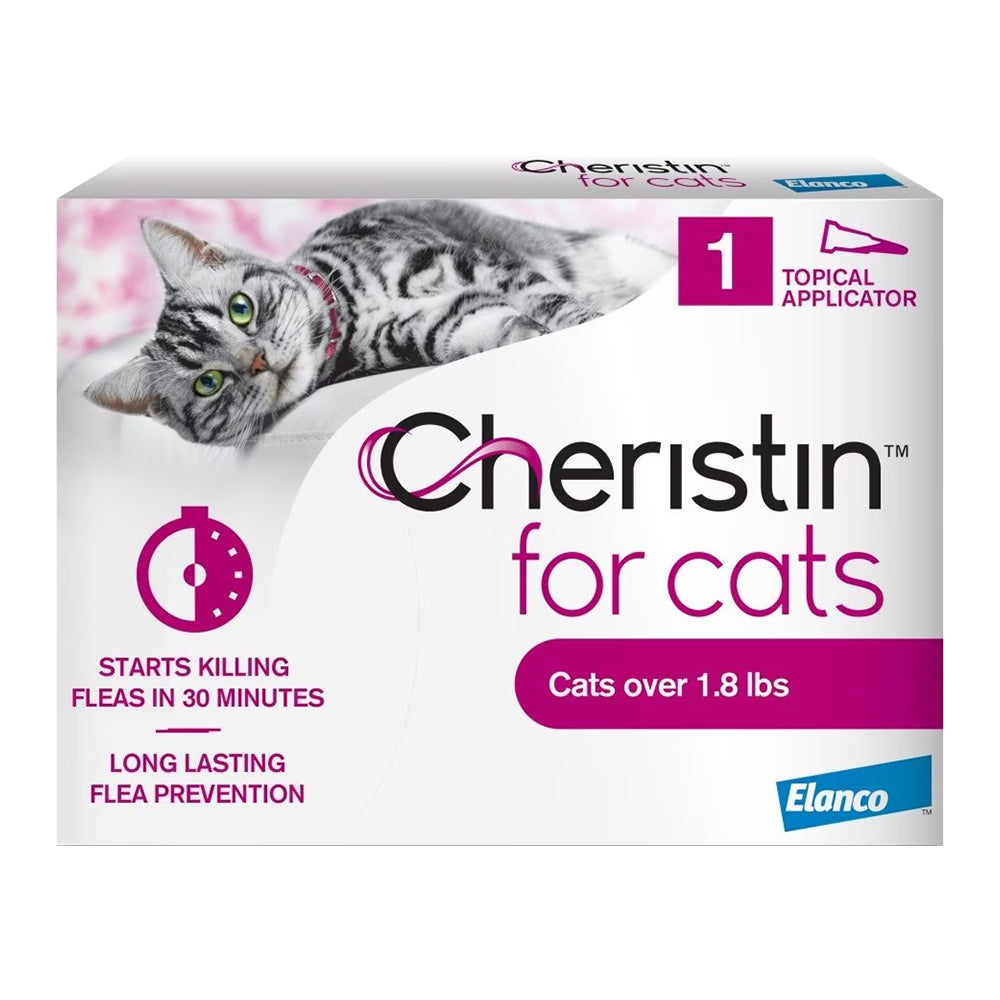
Elanco Cheristin Topical Flea Treatment & Prevention for Cats 1 Count
2. Zodiac Spot On Plus Flea & Tick Control for Cats
Zodiac Spot On Plus provides fast, gentle, and effective protection against fleas and ticks. Its easy-to-apply formula ensures comfort while keeping cats safe from biting pests and reinfestation.
Key Benefits:
-
Kills fleas and deer ticks effectively for up to one month
-
Helps prevent flea reinfestation with continued protection
-
Repels mosquitoes for up to 28 days, reducing irritation and bites
- Targets flea eggs to break the life cycle and prevent future outbreaks
-
Easy topical application offers reliable, month-long pest control
Best For:
Adult cats weighing 5 lb and over needing monthly protection from fleas, ticks, and mosquitoes.

Zodiac Spot On Plus Flea & Tick Control for Cats Weighing 5-lb & Over 4 Count
3. Vet's Best Flea & Tick Gentle Mist Spray for Cats 6.3-oz
Vet’s Best Flea & Tick Gentle Mist Spray provides fast, gentle, and natural protection against fleas and ticks. Its plant-based formula ensures comfort while keeping cats and homes free from pests. Trusted by pet parents, it reflects Vet’s Best’s commitment to safe, effective, and eco-conscious care.
Key Benefits:
-
Made with plant-based ingredients like cottonseed oil and clove oil for natural pest control
-
Kills fleas, ticks, mosquitoes, and other pests by contact for effective protection
-
Safe for use on cats, bedding, carpets, upholstery, and other home surfaces
-
Breaks the flea life cycle to prevent reinfestation and recurring issues
- Features a pleasant cotton spice scent and a gentle mist for easy application
Best For:
Pet parents seeking a natural, plant-based flea and tick solution that’s safe for cats and the home.

Vet's Best Flea & Tick Gentle Mist Spray for Cats 6.3-oz
4. Vetality Firstect Plus Flea & Tick Treatment for Cats 3 Count
Vetality Firstect Plus provides fast, gentle, and effective flea and tick protection for cats. Its easy-to-apply formula ensures comfort, while Vetality is committed to preventing fleas at all stages from developing.
Key Benefits:
-
Provides comprehensive protection by killing fleas, flea eggs, ticks, and lice
-
Prevents flea infestations by stopping all life stages from developing
-
Kills all stages of ticks, including those transmitting Lyme disease
- Easy-to-apply topical treatment offers convenient monthly defense
-
Delivers vet-quality results at an affordable cost for pet parents
Best For:
Adult cats need reliable, vet-quality flea and tick protection with proven active ingredients.
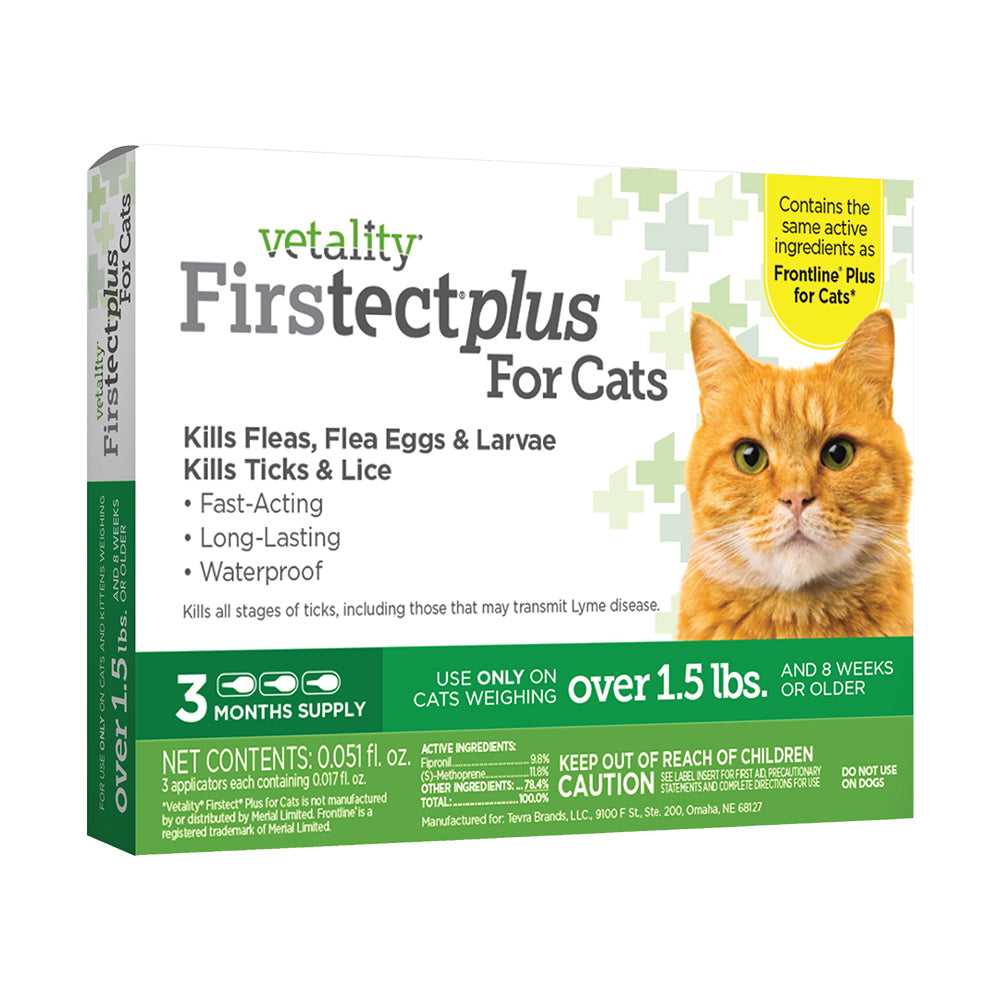
Vetality Firstect Plus Flea & Tick Treatment for Cats 3 Count
5. Promika Adventure Plus Flea & Tick Prevention for Cats
Promika Adventure Plus provides fast, gentle, and effective protection against fleas and ticks. Promika’s easy-to-apply formula ensures comfort while keeping cats free from biting pests and reinfestation.
Key Benefits:
-
Starts working through contact to kill fleas quickly before they lay eggs
-
Prevents flea eggs and larvae from developing into biting adults
-
Eliminates all larval stages to stop the flea life cycle
-
Waterproof formula remains effective after bathing or exposure to moisture
-
Offers immediate relief from infestations and prevents future outbreaks
Best For:
Adult cats who needs fast-acting, flea and tick prevention for ongoing comfort and protection.

Promika Adventure Plus 4-Month Supply Flea & Tick Prevention for Cats Over 9-lbs 4 Count
Natural and Alternative Flea Treatments
Pet owners seeking natural flea treatment for cats can consider sprays with essential oils like TropiClean Natural Flea & Tick Maximum Strength Home Spray. This product uses naturally-derived ingredients for short-term relief, but users should test in small amounts first to ensure no skin sensitivities

TropiClean Natural Flea & Tick Maximum Strength Home Spray 32-oz
Flea Treatment for Kittens: Extra Care Required
Specialized flea treatment for kittens is vital, as not all products are safe for young pets. Look for treatments clearly labeled for kittens, like Elanco Advantage II, and consult with a veterinarian before starting any medication on small or young pets.
Read more: Fleas On Cats: Symptoms, Signs and Solutions for Your Feline Friend
Final Takeaway
To achieve lasting protection, selecting the best flea treatment for cats ensures your feline remains comfortable, healthy, and free from persistent parasites. Routine treatment, environmental care, and regular vet guidance help create a safe environment for both your cat and your household. Effective flea control involves a combination of regular treatment, thorough cleaning of the environment, and preventive measures. Consistent application of the best flea treatment for cats, along with good hygiene practices, will help keep your feline friend flea-free and comfortable year-round.





